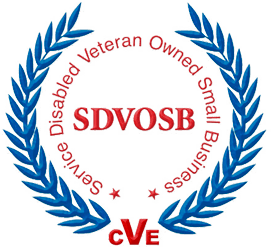Advance Auto Parts recently faced a significant data breach, exposing [...]
Pinning To Taskbar
The taskbar on Windows is a super convenient feature, allowing you to access your applications with ease. It’s especially great for putting applications that you often use, saving you a step rather than going to your desktop shortcuts or the Start menu. Sometimes it can be difficult to figure out how to customize your taskbar, however. Thankfully, with a few simple steps, you can be on your way to a perfectly customized taskbar that encourages productivity and saves you time.

Pinning to the Taskbar
If you need to pin an application to the taskbar, it’s very simple. Just navigate to the Start menu by clicking on it at the lower-left part of your screen or clicking the Windows button on your keyboard. After this, you can either use the scroll bar or your mouse to scroll to your desired application. You can also click on one of the letters or the number symbol (#) at the top to navigate to a specific section. Want another way to do this? After you open the Start menu, simply type in the name of your application. If you clicked one of the letter symbols first, typing will actually search for a letter instead. This has an easy fix– just click the leftmost side of the Start menu to resume normal searching.
Once you’ve done one of these methods, you should have found your application. To pin it to the taskbar, just right-click the application, hover your cursor over “More” and then left-click “Pin to taskbar.” Once you do this, your application will be on the taskbar, ready for you to access.
Did you know you can avoid the Start menu altogether? If you right-click an application that’s already open on the taskbar, the “Pin to taskbar” setting will appear, which you can left-click. This is an easy shortcut.
Unpin from the Taskbar
Once you’ve pinned your favorite applications, you also may want to know how to unpin from the taskbar. Unpinning from the taskbar allows you to remove any default applications from the taskbar or undo a mistaken pin. Thankfully, this is even easier than pinning to the taskbar. All you need to do is right-click on the taskbar application you’d like to remove, then left-click the option “Unpin from taskbar.” It’ll have a pin symbol as well, just with a no symbol next to it. With that, you successfully removed an application from the taskbar.
Keep in mind that if an application is open, it will still show up on the taskbar. This is not a mistake– it’s just showing that the application is open at the moment. Once you close out of the application, it will disappear from the taskbar. Unless you open the application again or repin it to the taskbar, it won’t show up there again.
Arrange Your Applications
Now that you have your favorite applications on the taskbar and have unpinned any you don’t want, you’ll likely want to arrange your applications. Arranging your applications allows you to further customize your taskbar to your liking. You can put them in a logical order for organization’s sake, or you can even organize them by color if you wish.
However you’d like to arrange your taskbar applications, it’s pretty simple to do. Left-clicking an app on the taskbar will open the app, but if you hold down the left-click button and drag, you can move your applications around. After you release the left-click, it will stay it whatever position you left off on. You can do this as many times as you like.
Useful Taskbar Settings
If you’d like to customize your taskbar even more, you can. Just go to the Start menu and click the Settings button on the lefthand side (unless you pinned Settings to the taskbar, of course). Once you’re in the Settings menu, click on “Personalization.” On the lefthand side, you’ll see “Taskbar.” Click it to find your taskbar settings. There are plenty of options, and here are a few useful ones you might want to know:
- You can disable “Automatically hide the taskbar in desktop mode” to keep the taskbar available always. Normally the taskbar disappears unless you hover at the bottom of the screen, and disabling this setting allows you to see it at all times. The only time it will disappear again is if you are in fullscreen mode (F11).
- If you have a 2-in-1 laptop (laptop/tablet) you can enable “Automatically hide the taskbar in tablet mode.” Just swipe up from the bottom part of the screen when in tablet mode to access the taskbar.
- You can enable “Lock the taskbar” if you don’t want to resize or move your taskbar by accident (we’ll get into moving the taskbar in the next section).
- You can enable “Small taskbar buttons” to have a much smaller taskbar. This is great if you want to keep your taskbar low-profile.
- The “Taskbar location on screen” setting allows you to change the location of the taskbar. You can move the taskbar to the left side, the right side, or even the top of the screen. If you decide you don’t like any of these options, you can change it to be at the bottom of the screen once again.
- The “Combine taskbar buttons” setting is set to “Always” by default. If you change it, the taskbar buttons will have labels, making them look similar to browser tabs.
Other Ways to Customize the Taskbar
There’s another way to customize the taskbar as well, which has different options than the ones that show up in Settings. If you go to an empty area of the taskbar and right-click, a menu will pop up with different options. There are a few different options beginning with “Show” that allow you to change the default taskbar even more. Click “Show Cortana button” to remove the Cortana button, which works the same for the other buttons, such as the Task View Button. You can also hover over “Search” and click “Hidden” to remove the search bar. Towards the bottom of the menu, you can click “Lock the taskbar” just like in settings, or you can click “Taskbar settings,” which is a shortcut to the options we explored in the previous section.
There’s also another way to move the taskbar. If you click and drag from an empty area of the taskbar to the left, right, or top of the screen, it will move the taskbar to that section. Locking the taskbar prevents you from doing this.
Let Colorado Computer Support Help You
If you need more help with the taskbar or any other computer assistance, we’d be happy to help! Contact us at Colorado Computer Support today. Our team of experienced technicians will listen to your specific problem and work to find a solution.
Latest Blog Posts

Discover why rural and critical access hospitals are not immune to [...]

Explore the recent AT&T data breach affecting call logs from Oct 2022 [...]



